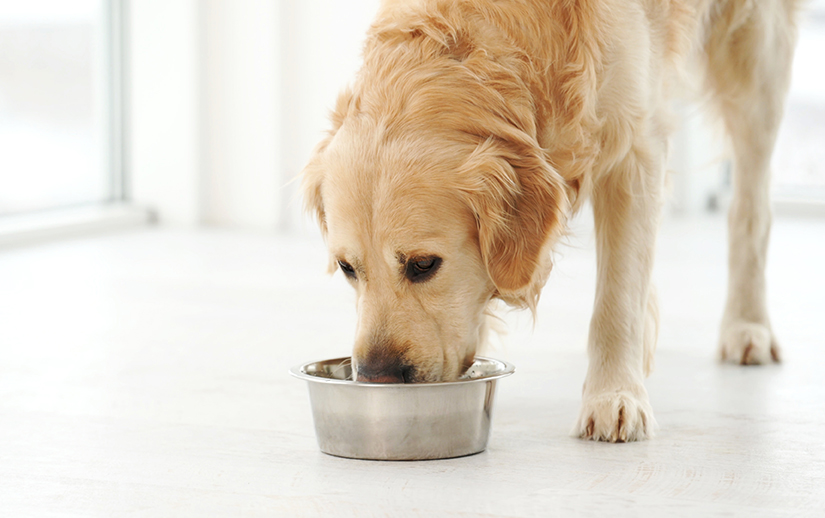Chronic Kidney Disease in Dogs and Cats

Chronic kidney disease (CKD) is the loss of kidney function over time. We tend to see this disease in our older cats and dogs.
The kidneys have a large amount of reserve capacity to continue to do their job effectively. For that reason, clinical signs of kidney disease may not occur until 75% of kidney function has been lost. In many cases, this means that the kidneys were losing function for months to years before clinical signs became evident. That’s why routine bloodwork and urinalysis in our senior patients, even when they are feeling well, are crucial steps for making an early diagnosis.
CKD has four stages. Pets in stages I and II may not show any clinical signs of kidney disease. In later stages, pets typically experience increased thirst and urination, lethargy, weight loss, vomiting, diarrhea, signs of dehydration, and decreased appetite.
For dogs, age of onset is related to the size of the dog. In small dogs, the age of onset generally ranges between 10 and 14 years. Large dogs, however, can experience CKD as early as 7 years of age.
In cats, CKD typically occurs at age 7 or older. An estimated 30% to 40% of cats over 10 years of age are affected, and for cats over 15 years of age, the percentage affected doubles.
The Many Functions of Kidneys
Regulating hydration. In times of dehydration, the kidney responds by conserving water. In times of excess water, the kidney efficiently removes the excess to prevent dilution of the blood. As the kidneys fail, they are no longer able to do this. The result is that urine is no longer concentrated (which means too much water is lost in the urine), and pets must drink more water to stay adequately hydrated.
Balancing calcium and phosphorus. When either calcium or phosphorus become too high, there is a risk for mineralization of the tissues. As the kidneys fail, phosphorus starts to rise. Treatment for patients with CKD requires monitoring phosphorus levels and giving a prescription diet and/or medication to keep phosphorus in a normal range.
Balancing electrolytes. As the kidneys fail, they lose their ability to conserve potassium, so these values must be closely monitored. Low potassium can lead to weakness and the need for supplementation.
Regulating blood pressure. Sensors within the kidneys monitor for high blood pressure. If these sensors are damaged, there is the risk of high blood pressure, which can damage other organs. In pets with CKD, blood pressure must be closely watched.
Retaining protein. Healthy kidneys prevent protein in the blood from being lost to the urine. As the kidneys fail, protein can leak into the urine, which can worsen kidney disease.
Producing red blood cells. The kidneys are responsible for a hormone called erythropoietin, which tells the body to produce more red blood cells when they are needed. Without this hormone, anemia can occur, so packed cell volume (PCV) and hematocrit, two red blood cell parameters, must be monitored.
Managing Chronic Kidney Disease
Chronic kidney disease, unfortunately, cannot be cured. It is a progressive disease, but it can be managed. The goals of treatment include minimizing the amount of waste products in the blood, addressing any electrolyte disturbances, maintaining adequate hydration, controlling blood pressure if high, and slowing the progression of the disease.
Pets with CKD pets must always have access to fresh water. Because their kidneys cannot concentrate their urine appropriately, these pets lose a large amount of water in the large volumes of urine they produce. Therefore, they must drink a lot of water to stay hydrated.
These pets must eat a diet specially formulated for kidney disease. Kidney diets contain less protein, sodium, and phosphorus and increased omega-3 fatty acids. Introduce the new diet over a period of 7 to 10 days. Gradually increase the proportion of the kidney diet and decrease the amount of the old diet until the pet has transitioned to eating only the new diet. Kidney diets come in a variety of flavors, so if your pet develops a flavor aversion, other options can be substituted.
As the kidney disease progresses, additional treatment may be needed to support your pet. For example, your pet may need subcutaneous fluids at home, anti-emetic (anti-vomiting) drugs, appetite stimulants, phosphorus binders, medication to reduce protein loss in the urine, medication to lower blood pressure, and potassium supplementation.
Prognosis
It is difficult to predict how long a pet with CKD will live. Regular check-ups and blood and urine tests allow doctors to monitor the progression of the disease. You should also watch your pet closely to notice changes in their health and behavior. The frequency of check-ups will be determined by your veterinarian based on staging of the disease, response to any treatments implemented, and whether your pet has developed new or worsening clinical signs.
Since early detection is paramount, consider discussing blood and urine testing for your senior pet during their next visit to the veterinarian.
– Dr. Jeanette Barragan
